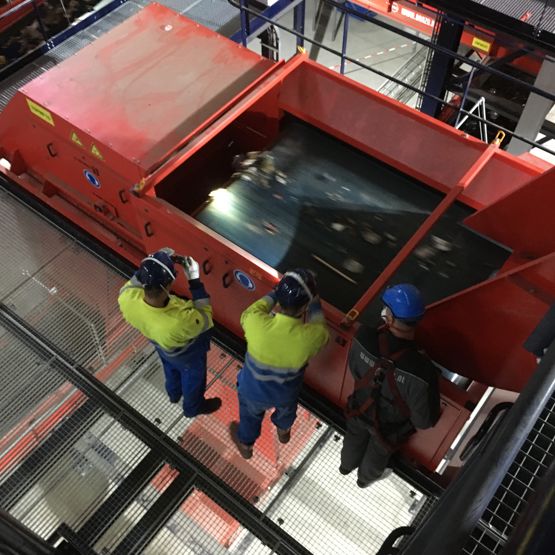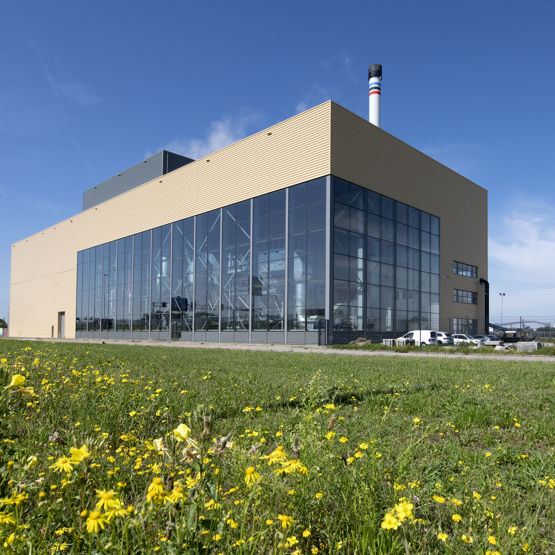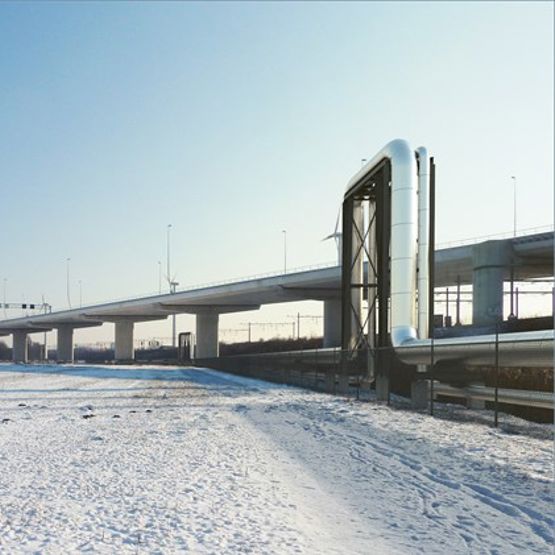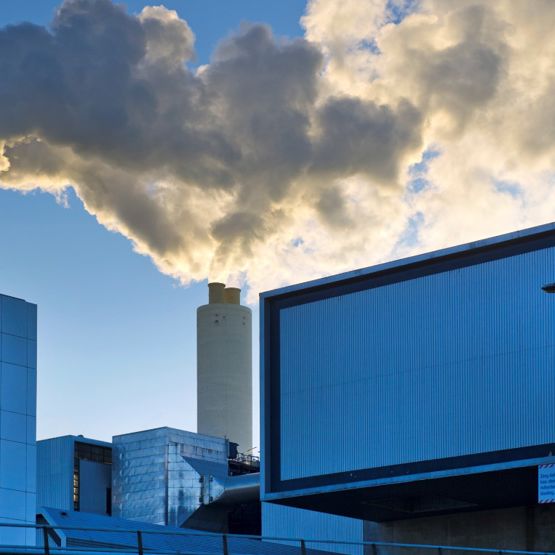Here is what we do in the sustainable waste processing chain:
- Every day, about 500 lorries bring a wide array of different waste streams to our facilities.
- Some of the waste goes to our post-separation system first, where we recover as many raw materials as possible for reuse.
- The remaining waste is sent to the incineration plants, where it is used as fuel to generate energy as efficiently as possible. The resulting energy is used to heat homes and businesses, with another part being converted into electricity.
- From the flue gases and bottom ash, we recover all the raw materials we can.

Incineration lines
AEB generates energy from waste in six incineration lines, four of which are located at the Waste-to-Energy Plant. These lines have been up and running since 1993 and have a combined capacity of 850,000 tonnes of waste per year. The two most modern lines are found in the High-Efficiency power plant, which was designed to optimise the output of energy and raw materials. At 30%, our HE plant delivers the highest energy efficiency and recovers the most raw materials. The HE plant is also equipped with a powerful flue gas treatment system that was designed to minimise emissions.

Waste separation plant
In 2017, a new separation system was commissioned for the large-scale post-separation of household waste, capable of recovering seven different types of raw material streams for recycling. Every day, our partner municipalities have 900 tonnes of waste separated at the plant, and we will be taking steps to recover even more raw materials in the near future.

Biomass power plant
In 2020, AEB finished construction on a sustainable power plant in Amsterdam’s Western Docklands. The plant, which runs on biomass – low-quality Dutch lumber –, has allowed AEB to double the amount of sustainable heat delivered to the city’s heat grid. The biomass power plant effectively reduces the city’s reliance on fossil fuels, avoiding 67,000 tonnes of carbon emissions every year. The AEB Bioenergy Plant converts up to 110,000 tonnes of low-grade prunings and waste lumber into renewable energy for Amsterdam each year.

Steam supply
At the beginning of 2019, research was started on developing steam supply from the AEB plant to neighbouring company Argent Energy. It is possible to supply steam from our existing installations to surrounding companies. This steam is a more sustainable and cheaper alternative for the surrounding process industry than using fossil natural gas.

CO2 capture and transport
AEB wants to capture up to 500 kilotonnes of carbon from its flue gases and store it in empty gas fields in the North Sea, In total about 500 ktonnes. significantly reducing its fossil carbon emissions. Plans for the capture plant and storage have now received funding from the central government. AEB’s carbon capture and storage activities are expected to be operational by early 2028.
